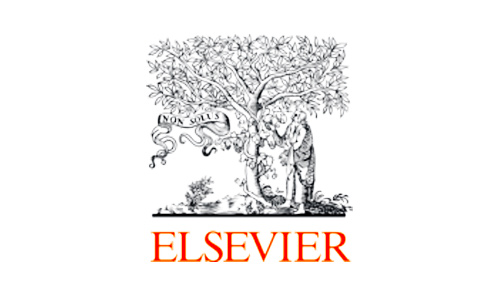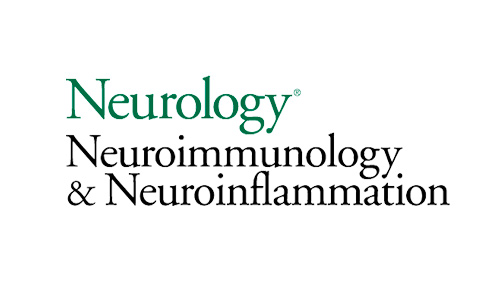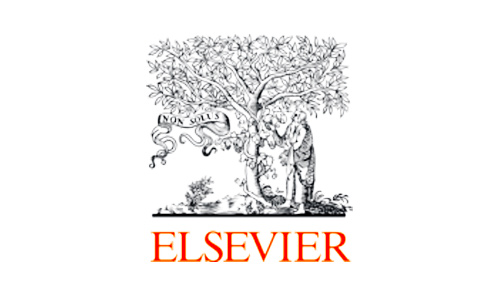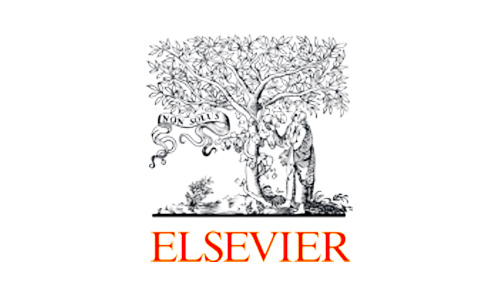- Follow Us
Scientific Publications
High-profile publications featuring CDI Labs next-gen proteomics technologies and services
354 Total Publications
Refine Your Search
Publication Details
- Date
- Link
- + Abstract

Frontiers in Immunology
- Main Product: Focused Array
- Discovering Panel of Autoantibodies for Early Detection of Lung Cancer Based on Focused Protein Array
- Di Jiang, Xue Zhang, Man Liu, Yulin Wang, Tingting Wang, Lu Pei, Peng Wang, Hua Ye, Jianxiang Shi, Chunhua Song, Kaijuan...
- Dept of Oncology, Zhengzhou University,
Substantial studies indicate that autoantibodies to tumor-associated antigens (TAAbs) arise in early stage of lung cancer (LC). However, since single TAAbs as non-invasive biomarkers reveal low diagnostic performances, a panel approach is needed to provide more clues for early detection of LC. In the present research, potential TAAbs were screened in 150 serum samples by focused protein array based on 154 proteins encoded by cancer driver genes. Indirect enzyme-linked immunosorbent assay (ELISA) was used to verify and validate TAAbs in two independent datasets with 1,054 participants (310 in verification cohort, 744 in validation cohort).

European Journal of Pharmacology - Elsevier
- Main Product: HuProt
- HuProt: A comprehensive screening method for investigating the potential binding targets of doxorubicin based on protein microarray
- Xu Wang, Jian Jin, et. al.
- School of Pharmaceutical Sciences, Jiangnan University
HuProt Small Molecule: With the development of precision therapy, pharmacological research pays more and more attention to seek and confirm the target of drugs in order to understand the mechanism of drug action and reduce side effects. Screening candidate proteins can be effectively used to predict potential drug targets and toxicity. Therefore, a high-throughput drug-binding protein screening method based on protein microarray which contains over 21,000 human proteins was introduced in this investigation.

Regulatory Toxicology and Pharmacology - Elsevier
- Main Product: HuProt
- HuProt: Classic and evolving approaches to evaluating cross reactivity of mAb and mAb-like molecules
- Timothy K. MacLachlan, Michael W. Leach, et. al.
- Novartis Institutes for Biomedical Research
HuProt Antibody Specificity: Monoclonal antibodies (mAbs) and mAb derivatives have become mainstay pharmaceutical modalites. A critical assessment is to ascertain the specificity of these molecules prior to human clinical trials. The primary technique for determining specificity has been the immunohistochemistry (IHC)-based “Tissue Cross-Reactivity” (TCR) assay, where the candidate molecule is applied to > 30 tissues to look for unexpected staining. In the last few years, however, non-IHC array-based platforms have emerged that allow for screening 75–80% of the human membrane proteome, indicating a viable alternative and/or addition to the IHC methods.

Nature Cell Death & Disease
- Main Product: HuProt
- HuProt: hPER3 promotes adipogenesis via hHSP90AA1-mediated inhibition of Notch1 pathway
- Xinxing Wan, Ke Chen, et. al.
- Dept of Endocrinology, Third Xiangya Hospital, Central South University, Changsha
HuProt PPI: The period circadian regulator 3 (PER3) has been reported to play a negative role in human immortalized bone marrow-derived Scp-1 cells (iBMSCs) and patient adipose-derived stromal cells (PASCs) or a negative/positive role in mice adipogenesis. However, human PER3 (hPER3) was identified as a positive regulator of human adipose tissue-derived stromal cells (hADSCs) adipogenesis in this study. Silencing or overexpression of hPER3 in hADSCs inhibited and promoted adipogenesis in vitro. In vivo, the overexpression of hPER3 increased high-fat diet-induced inguinal white adipose tissue (iWAT) and epididymal white adipose tissue (eWAT) forms, increasing systemic glucose intolerance and insulin resistance.

Neurology - Neuroimmunology & Neuroinflammation
- Main Product: HuProt
- HuProt: CIDP Antibodies Target Junction Proteins and Identify Patient Subgroups
- Christian P. Moritz, Yannick Tholance, Oda Stoevesandt, Karine Ferraud, Jean-Philippe Camdessanché, Jean-Christophe Antoine
- Dept of Neurology and Dept of Biochemistry, University Hospital of Saint-Etienne
Objective To discover systemic characteristics in the repertoires of targeted autoantigens in chronic inflammatory demyelinating polyneuropathy (CIDP), we detected the entire autoantigen repertoire of patients and controls and analyzed them systematically.

Frontiers in Oncology
- Main Product: HuProt
- HuProt: Identification of Novel Autoantibodies Based on the Human Proteomic Chips and Evaluation of Their Performance in the Detection of Gastric Cancer
- Chi Cui, Jianxiang Shi, et. al.
- BGI College & Henan Institute of Medical and Pharmaceutical Sciences, Zhengzhou University
HuProt Autoantibodies: Autoantibodies against tumor-associated antigens (TAAbs) can be used as potential biomarkers in the detection of cancer. Our study aims to identify novel TAAbs for gastric cancer (GC) based on human proteomic chips and construct a diagnostic model to distinguish GC from healthy controls (HCs) based on serum TAAbs. The human proteomic chips were used to screen the candidate TAAbs. Enzyme-linked immunosorbent assay (ELISA) was used to verify and validate the titer of the candidate TAAbs in the verification cohort (80 GC cases and 80 HCs) and validation cohort (192 GC cases, 128 benign gastric disease cases, and 192 HCs), respectively.

Nature
- Main Product: HuProt
- IgA transcytosis and antigen recognition govern ovarian cancer immunity
- Subir Biswas, Gunjan Mandal, Kyle K. Payne, Carmen M. Anadon, Chandler D. Gatenbee, Ricardo A. Chaurio, Tara Lee...
- Dept of Immunology, H. Lee Moffitt Cancer Center and Research Institute
Most ovarian cancers are infiltrated by prognostically relevant activated T cells, yet exhibit low response rates to immune checkpoint inhibitors. Memory B cell and plasma cell infiltrates have previously been associated with better outcomes in ovarian cancer, but the nature and functional relevance of these responses are controversial. Here, using 3 independent cohorts that in total comprise 534 patients with high-grade serous ovarian cancer, we show that robust, protective humoral responses are dominated by the production of polyclonal IgA, which binds to polymeric IgA receptors that are universally expressed on ovarian cancer cells.

JCI Insight
- Main Product: HuProt
- PhIP-Seq: Dromedary camels as a natural source of neutralizing nanobodies against SARS-CoV-2
- Lotfi Chouchane, Jingxuan Shan, et. al.
- Dept of Microbiology and Immunology, Weill Cornell Medicine
The development of prophylactic and therapeutic agents for coronavirus disease 2019 (COVID-19) is a current global health priority. Here, we investigated the presence of cross-neutralizing antibodies against severe acute respiratory syndrome coronavirus 2 (SARS-CoV-2) in dromedary camels that were Middle East respiratory syndrome coronavirus (MERS-CoV) seropositive but MERS-CoV free. The tested 229 dromedaries had anti–MERS-CoV camel antibodies with variable cross-reactivity patterns against SARS-CoV-2 proteins, including the S trimer and M, N, and E proteins. Using SARS-CoV-2 competitive immunofluorescence immunoassays and pseudovirus neutralization assays, we found medium-to-high titers of cross-neutralizing antibodies against SARS-CoV-2 in these animals.

Genomics, Proteomics & Bioinformatics - Elsevier
- Main Product: HuProt
- HuProt: An Integrated Systems Biology Approach Identifies the Proteasome as A Critical Host Machinery for ZIKV and DENV Replication
- Guang Song, Heng Zhu, et. al.
- Dept of Pharmacology & Molecular Sciences, Johns Hopkins Medicine
HuProt PPI: The Zika virus (ZIKV) and dengue virus (DENV) flaviviruses exhibit similar replicative processes but have distinct clinical outcomes. A systematic understanding of virus–host protein–protein interaction networks can reveal cellular pathways critical to viral replication and disease pathogenesis. Here we employed three independent systems biology approaches toward this goal. First, protein array analysis of direct interactions between individual ZIKV/DENV viral proteins and 20,240 human proteins revealed multiple conserved cellular pathways and protein complexes, including proteasome complexes.

New Biotechnology - Elsevier
- Main Product: HuProt
- HuProt: Proper definition of the set of autoantibody-targeted antigens relies on appropriate reference group selection
- Christian P. Moritz, Oda Stoevesandt, Yannick Tholance, Jean-Philippe Camdessanché, Jean-Christophe Antoine
- Synaptopathies and Autoantibodies, Faculty of Medicine Jacques Lisfranc, University Jean Monnet
Autoimmune diseases are frequently associated with autoantibodies. Recently, large sets of autoantibody-targeted antigens (“autoantigen-omes”) of patient and control sera have been revealed, enabling autoantigen-omic approaches. However, statistical standards for defining such autoantigen-omes are lacking. The z-score indicates how many standard deviations an antigen reactivity of a given sample is from the mean reactivity of the corresponding antigen in a reference group. Hence, it is a common measure to define significantly positive reactivity in autoantigen profiling approaches.